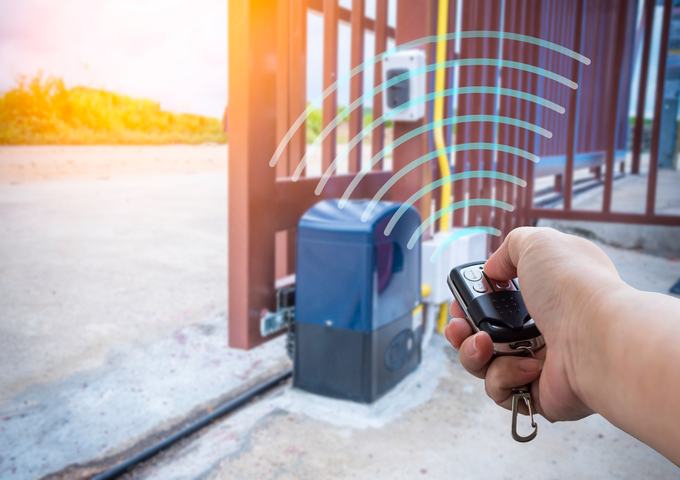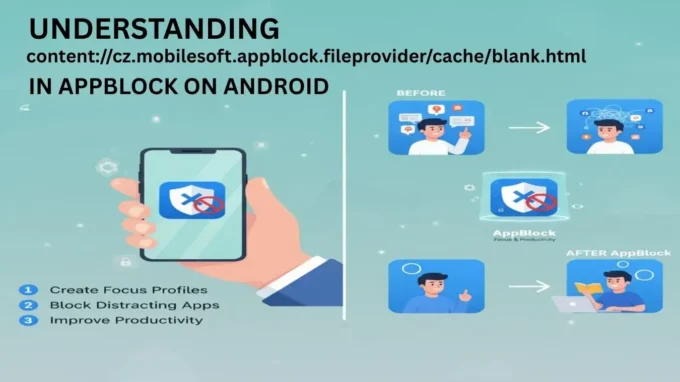In a fast-paced digital world, success isn’t just about creating great products—it’s about how your brand connects, adapts, and evolves with customers. This is where brand elevation scalable agile solutions come together.
Brand elevation is about improving how your brand is perceived—enhancing trust, recognition, and emotional connection. Meanwhile, scalable agile solutions allow organizations to deliver value quickly and consistently, even across large, complex structures.
When combined, these two concepts enable businesses to operate with speed and flexibility while reinforcing their brand identity. This guide explains how to elevate your brand using scalable agile practices, offering a step-by-step approach, examples, metrics, and best practices.
What is Brand Elevation?
Brand elevation is the process of strengthening your brand’s market position and emotional connection with customers. It focuses on consistency, authenticity, and long-term loyalty rather than short-term sales.
Key elements include:
-
Building and maintaining customer trust
-
Aligning brand values with actions
-
Delivering on promises consistently
-
Creating emotional engagement with audiences
-
Ensuring a unified message across all touchpoints
When a brand is elevated, customers associate it with quality, credibility, and innovation. This helps create advocates rather than just buyers.
What Are Scalable Agile Solutions?

Agile solutions are frameworks that prioritize collaboration, adaptability, and customer feedback in product or service delivery. Scalable agile solutions extend these practices across large organizations, enabling multiple teams to work efficiently in alignment with business goals.
Common frameworks include:
-
SAFe (Scaled Agile Framework) – Ideal for large enterprises needing alignment and governance.
-
Scrum@Scale – Extends Scrum principles across multiple teams.
-
LeSS (Large-Scale Scrum) – Simplifies scaling for medium to large teams.
The goal is to create a system where speed, innovation, and quality coexist, ensuring every action delivers measurable business and brand value.
Also read: Is ibomma1.com Safe? What You Need to Know About the Movie Site
Why Combine Brand Elevation with Scalable Agile?
The fusion of brand elevation and agile scalability creates a unified strategy that strengthens both brand perception and operational agility.
Here’s why this combination is powerful:
-
Customer-Centricity: Agile ensures your teams listen to customers. Brand elevation ensures what they hear is translated into meaningful experiences.
-
Faster Adaptation: Agile helps companies respond quickly to market changes while protecting brand integrity.
-
Consistency Across Teams: Scaled agile frameworks align all departments, ensuring every customer interaction reinforces brand values.
-
Enhanced Brand Loyalty: Frequent, value-driven releases increase customer satisfaction, which directly strengthens brand trust.
-
Sustainable Growth: Combining brand strategy with agile execution creates long-term resilience in a competitive market.
Core Components of Brand Elevation with Agile
To effectively implement this strategy, focus on these five components:
1. Customer-Centric Brand Development
Everything begins with the customer. Understand their needs, challenges, and emotions through research and data analysis. Build user stories and journeys that directly link to brand goals.
-
Collect and analyze customer feedback continuously
-
Incorporate voice-of-customer insights into sprints
-
Develop solutions that reflect brand values and solve customer pain points
2. Scalable Systems and Processes
Your processes must support agility and brand growth simultaneously.
-
Automate repetitive workflows
-
Use modular and reusable design systems
-
Establish standards that scale across teams while maintaining flexibility
3. Agile Implementation and Governance
Adopt a scalable agile framework that aligns your teams without stifling creativity.
-
Organize teams around value streams, not silos
-
Align sprint goals with brand objectives
-
Maintain governance that ensures brand integrity while promoting autonomy
4. Brand-Driven Alignment
Ensure brand strategy guides every agile decision.
-
Integrate brand objectives into agile backlogs
-
Include marketing and branding teams in agile ceremonies
-
Define brand guardrails—core values and messages that teams must uphold
5. Continuous Measurement and Feedback
Constant feedback ensures both your brand and agile practices stay effective.
-
Measure both performance (speed, quality) and perception (trust, satisfaction)
-
Use analytics and customer data to refine strategies
-
Encourage retrospectives focused on brand impact as well as process improvement
Table: Key Components and Metrics
| Component | Example Metrics | Connection to Brand Elevation |
|---|---|---|
| Customer-Centric Development | Customer Satisfaction, NPS, Feedback Rate | Builds loyalty and trust |
| Scalable Processes | Time-to-Market, Cost Efficiency | Demonstrates brand reliability and efficiency |
| Agile Governance | Sprint Velocity, Release Frequency | Strengthens perception of agility and quality |
| Brand Alignment | Brand Sentiment, Recognition Score | Ensures consistent brand message |
| Continuous Feedback | Retention Rate, Engagement Metrics | Reinforces long-term customer relationships |
Step-by-Step Framework to Implement

Phase 1: Assess and Align
-
Conduct a brand audit to understand current perception.
-
Evaluate agile maturity—how ready your teams are for scaling.
-
Align executives, marketing, product, and delivery leaders around a shared vision.
-
Define measurable goals linking brand and agile outcomes.
Phase 2: Plan Strategically
-
Develop a brand elevation roadmap aligned with agile implementation.
-
Set up cross-functional teams with shared KPIs.
-
Create brand-centric backlog items that deliver both customer and brand value.
-
Train teams on agile principles and brand consistency.
Phase 3: Execute Iteratively
-
Begin with pilot projects or “brand sprints.”
-
Use feedback loops to refine both product and brand delivery.
-
Review brand perception after each sprint cycle.
-
Expand successful practices across departments.
Phase 4: Govern and Sustain
-
Maintain a balance between flexibility and brand consistency.
-
Use brand guidelines as guardrails for agile teams.
-
Continuously measure outcomes and celebrate successes.
-
Encourage teams to share learnings and improve collectively.
Real-World Examples
1. Spotify
Spotify’s “squad” and “tribe” model allows teams to move quickly while staying true to the brand’s identity of innovation and creativity. Each team focuses on a specific user experience while upholding Spotify’s brand promise of simplicity and personalization.
2. ING Bank
By restructuring into agile squads, ING reduced time-to-market dramatically. Their agile transformation also strengthened the brand’s image as a modern, customer-first financial institution.
3. Tech Service Firm
A mid-sized technology company implemented scaled agile alongside a brand refresh initiative. Within a year, it achieved faster product releases, improved client satisfaction, and increased brand recognition in the market.
Benefits of Brand Elevation via Scalable Agile Solutions
Enhanced Customer Trust – Delivering consistent, quality experiences boosts reliability.
Faster Innovation – Agile frameworks enable quick experimentation and learning.
Brand Consistency – Scaling agile ensures a unified brand experience across all touchpoints.
Improved Operational Efficiency – Better workflows reduce waste and costs.
Resilience in Change – Agile systems make brands adaptable to disruptions.
Sustainable Growth – Long-term alignment between brand and business goals drives success.
Common Challenges and Solutions
| Challenge | Why It Happens | How to Overcome |
|---|---|---|
| Resistance to Change | Traditional culture or hierarchy | Educate teams, start small, show quick wins |
| Inconsistent Brand Messaging | Lack of coordination across teams | Use brand guardrails and regular reviews |
| Technology Barriers | Outdated tools or limited automation | Modernize systems and adopt flexible tech |
| Misaligned Metrics | Different teams track different goals | Define unified brand and agile KPIs |
| Scaling Difficulties | Lack of governance or structure | Use frameworks like SAFe or Scrum@Scale |
Key Metrics to Measure Success
Brand Metrics
-
Brand Awareness
-
Net Promoter Score (NPS)
-
Brand Sentiment and Recognition
-
Customer Retention and Lifetime Value
-
Share of Voice in Market
Agile Metrics
-
Sprint Velocity
-
Lead and Cycle Time
-
Time-to-Market
-
Release Frequency
-
Product Quality and Defect Rate
By combining these, organizations can see how agile improvements directly enhance brand perception.
Read more: Prizmatem: The Concept, Meaning, Uses, and Complete Guide
Best Practices for Success

-
Unite Brand and Agile Teams: Eliminate silos between marketing and delivery.
-
Define a Clear Vision: Everyone should understand the brand promise.
-
Start Small, Scale Smart: Pilot first, then expand successful frameworks.
-
Maintain Brand Guardrails: Allow flexibility within defined brand principles.
-
Measure Everything: Track both agile and brand metrics.
-
Encourage Transparency: Share progress openly to maintain trust.
-
Invest in Culture: Brand elevation starts from within—empowered teams reflect a strong brand.
The Future of Brand Elevation with Agile
The connection between agile and brand elevation will only grow stronger in the coming years. Future trends include:
-
AI-Powered Personalization: Using data-driven insights to tailor brand experiences in real time.
-
Hybrid Agile Work Models: Supporting global teams while maintaining consistent brand values.
-
Purpose-Driven Brands: Integrating sustainability and ethics into brand identity.
-
Continuous Customer Feedback Loops: Real-time monitoring of customer sentiment to guide agile decisions.
Conclusion
In the modern marketplace, a powerful brand is not just one that looks good—it’s one that acts fast, adapts continuously, and delivers consistently. By combining brand elevation with scalable agile solutions, organizations can strengthen their identity, streamline delivery, and create lasting connections with customers.
This fusion creates a business that doesn’t just respond to change—it leads it. A truly elevated brand isn’t only known; it’s trusted, admired, and agile enough to thrive in any market condition.
FAQs
Q1. What is brand elevation?
Brand elevation is enhancing how your brand is perceived—building greater trust, recognition, and loyalty through consistent customer value.
Q2. What are scalable agile solutions?
These are frameworks that enable large organizations to implement agile principles efficiently across multiple teams while maintaining alignment.
Q3. How do agile solutions help in brand elevation?
Agile practices ensure quick responses to customer needs, continuous improvement, and consistency—all key to building a strong brand.
Q4. Is this approach suitable for small businesses?
Yes. Even small businesses can adopt agile principles and use them to strengthen their brand positioning and responsiveness.
Q5. How do I measure brand elevation success?
Track metrics such as brand sentiment, NPS, and customer retention alongside agile performance indicators like time-to-market and quality scores.
Q6. What’s the biggest challenge in implementing this approach?
The biggest challenge is alignment—ensuring that every team, from marketing to delivery, works toward a shared brand and agile vision.














Leave a comment